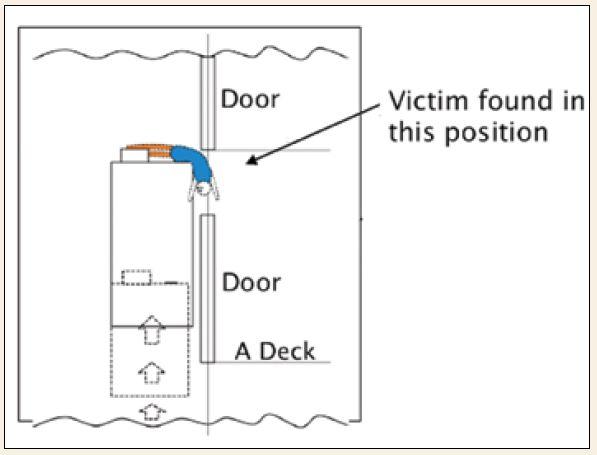201555 Elevator fatality
Edited from the official report of the Hong Kong SAR Marine Department
Routine inspections and maintenance of shipboard equipment had been scheduled while the vessel was at anchor. A ‘tool box’ meeting was held in the engine control room where the assistant electrical officer (AEO) said he wanted to check the ship’s elevator that day to try and find the cause of an abnormal noise. The second engineer instructed that he should be assisted by the fourth engineer and told him to take all necessary precautions as per the procedures.
The men posted red hand-written warning tags ‘Elevator Under Maintenance’ on every elevator doorhandle on each floor. Then, using the emergency key to open the landing door on B-deck, the fourth engineer changed over the AUTO-MANUAL selector switch on the elevator control panel mounted on the cage top from ‘AUTO’ to ‘MANUAL’ position. This meant pressing the individual buttons on each deck would not cause the elevator to function.
After that, the AEO joined the fourth engineer on the elevator top; he proceeded to control the movements of the cage by pressing the up and down button switches on the control panel to detect any noise during running. This caused the elevator to slowly move in the desired direction, but after about 10 minutes they came out without having determined the cause of the noise. The two men then proceeded to other duties, but the AEO returned alone to the elevator. Shortly thereafter, loud screaming was heard coming from the elevator location. Crew quickly came to the elevator and found the AEO trapped in the space between the elevator cage and the shaft. With some difficulty the AEO was pulled out of the cage and transferred to ship hospital. Throughout the operation, the crew tried to communicate with the AEO but got no response. He was later pronounced dead.
The company investigation found it probable that the switch on the control panel at the time of the accident was set to AUTO. Other safety devices were most probably bypassed; as such, any calls from decks above B-deck would cause the elevator to move up automatically at a speed of 30 metres per minute, which is the nominal speed of the machine.
The investigation into the accident revealed that the main contributing factor to the accident was that the elevator safety procedures issued by the company were not closely followed by the personnel. Additionally, the work was prepared without sufficiently appraising the associated risks.

Editor’s note: One of the principal contributing factors to many accidents is crew NOT following procedures. How ironic, and unfortunate in this case, that companies try and limit risk by writing procedures yet have crew bypass them in order to ‘get the job done’. But in many instances this is not just a manifestation of individual rogue behaviour. The leadership has probably tolerated procedural shortcuts and ‘telegraphed’ to crew their implicit acceptance of these unsafe acts.
